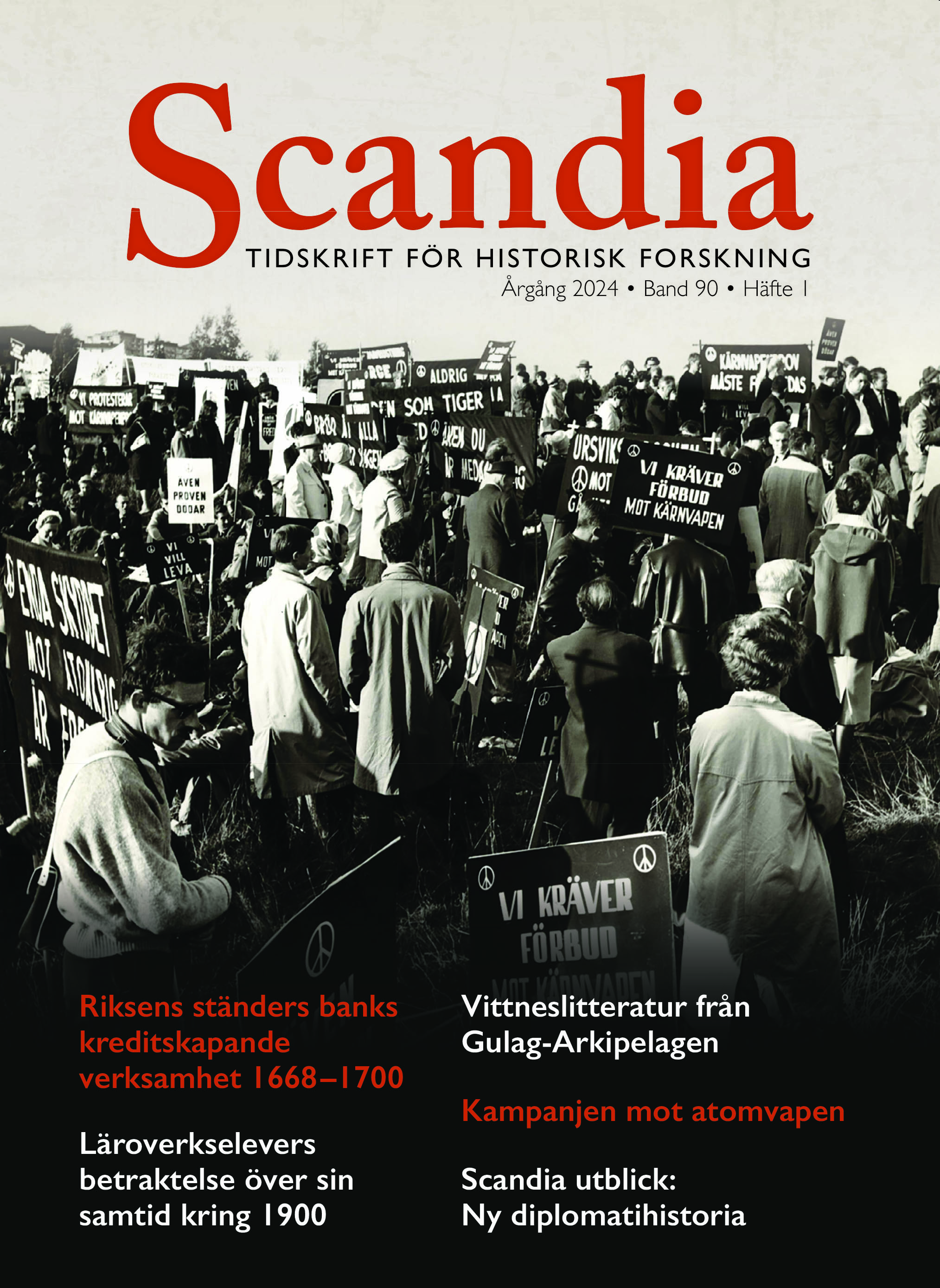”Tell the West”. Testimonial Literature from the Gulag Archipelago 1946–1953
DOI:
https://doi.org/10.47868/scandia.v90i1.26312Keywords:
testimony, witnessing, historiography, Gulag, memoirsAbstract
Testimonial literature from the Gulag Archipelago, published between 1946 and 1953, highlights the interactive dimension in the encounter between witness and recipient. Whereas the Nazi camps were well-documented after the war, the network of camps, prisons, settlements, and exile sites constituting the Gulag system, containing large contingents of political prisoners and ethnic minorities, were hardly known as such. This would change after Stalin’s death in 1953 with the ”thaw” and de-Stalinization campaigns initiated by Khrushchev. The writers published in the 1960s and 1970s could count on their readers being familiar with Stalin’s crimes and Khrushchev renouncing them.
In the years immediately following the war, the ability to narrate Soviet repression was limited by what the narrator believed he or she could make comprehensible, readable, and credible to a reader from whom he or she expected the worst, whose distrust the author felt compelled to anticipate, parry, and relate to in various ways. There are three different types of distrust directed at the authors in the years 1946–1953. The first type is ideological and rooted in the Soviet Union’s strong position as an allied victorious power at the end of the war. The second type of distrust is based on the authors being unable to prove or verify the experiences they describe. This type of mistrust arises when historical testimony is subjected to the same requirements as legal testimony, despite their different functions. The evidentiary requirements in the case of legal testimony may ensure the value and truthfulness of this testimony, while in the case of historical testimony, the same evidentiary requirements risk making the testimony itself impossible. The third type of distrust is existential. It concerns our unwillingness to believe in the unimaginable, to relate to what is beyond our imagination, and our desire to ignore what we do not want to be possible.
This corpus of testimonial literature reveals how testimonies are dependent on mutual trust: on the reader’s trust in the author and on the author’s trust in the reader’s willingness to receive the testimony. Furthermore, the different narratives demonstrate the ability of individual testimonies to push the boundaries of what we can imagine, what we can believe, and what we can narrate. It is precisely when communication is risky, when it challenges our established traditions of understanding, that testimonies may offer us new entry points into our past and new interpretative frameworks from which to approach our history anew.





